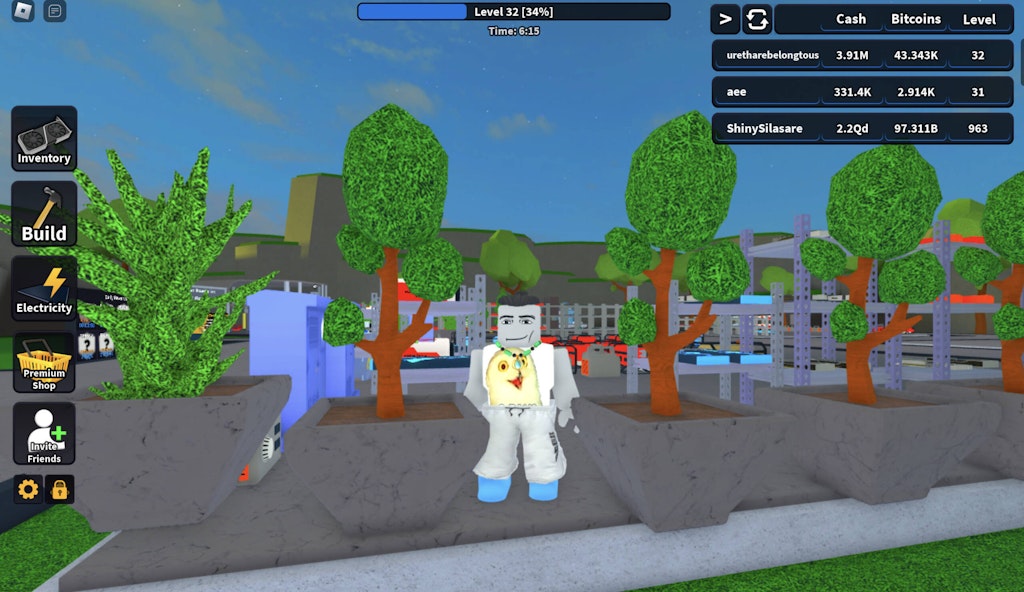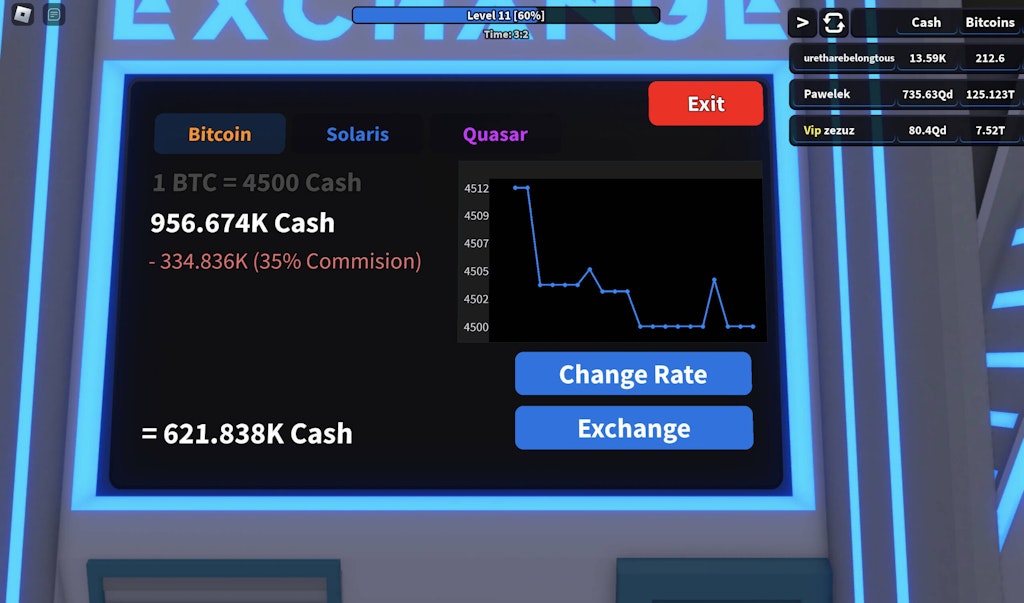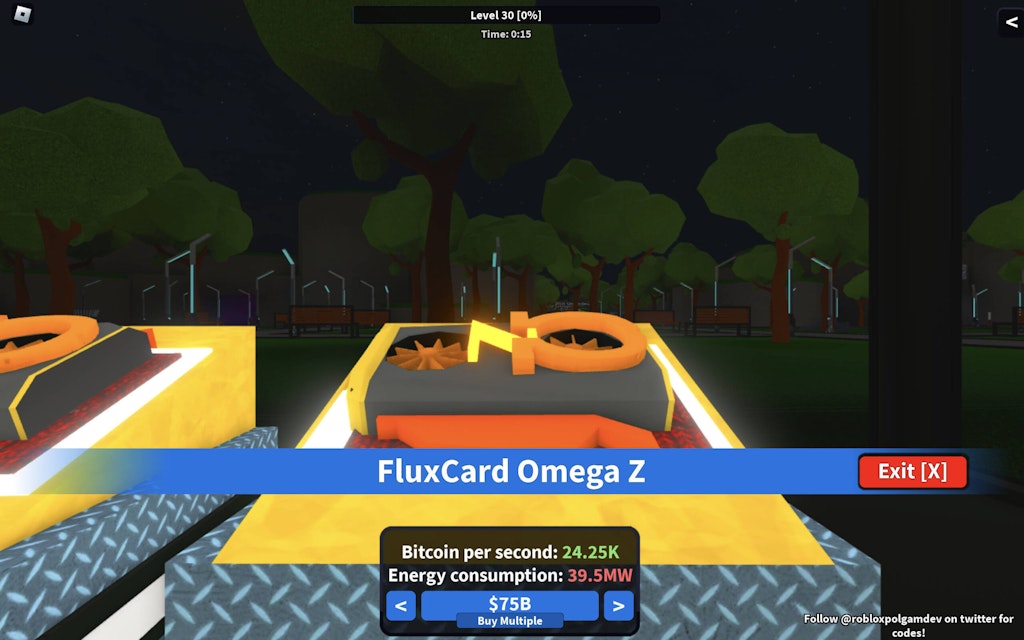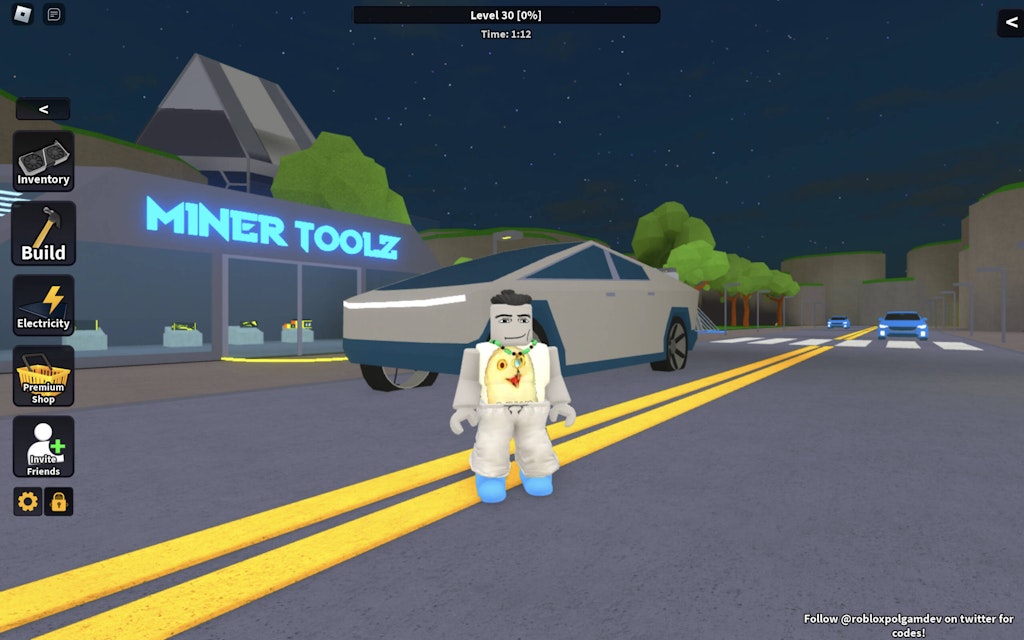If Only Mining Bitcoin Was as Easy as Mining Bitcoin in Roblox
Bitcoin miners have had a tough few years — but in the Roblox metaverse, they’re thriving

Midjourney modified by Blockworks
It took Marathon years to build out its pricey infrastructure capable of mining 1,200 bitcoins per month. I mine more than that in one second — in Roblox.
One of the most-frequented metaverse platforms worldwide, Roblox recorded about 66 million users every day in May. Users create their own blocky worlds for players to explore with their avatars, which can move freely between “experiences.”
Granted, Roblox is not a Web3 thing. It’s a walled garden maintained by a single software company, akin to Minecraft. But it still fits the “metaverse” definition.
Metaverse blockchain projects such as Decentraland are seeing about 500 concurrent active users. Roblox’s Bitcoin Miner Beta, by polandgamebuilders, enjoys more than four times that.
The game is something of a bitcoin mining simulator for kids (and crypto journalists out of ideas). It toys with the format perfected by Facebook-centric Zynga games like Farmville:
Buy this thing that unlocks incremental gains over time. Wait long enough to afford an even more powerful thing. Pay real money to speed up the whole process, otherwise: Rinse, repeat.
It’s mind-numbing. In a good way.

Baby’s first bitcoin miner
Bitcoin mining in Roblox starts with a plot of land. You buy a table for $40 and plonk down a “Budget Graphics Card” (also $40).
That card consumes 1 watt of (made up) energy in return for 0.00004 BTC a second. Bitcoin goes for $5,000 in the Roblox metaverse right now, so 0.00004 BTC is worth roughly $0.20 (to be clear, that’s fake bitcoin, fake US dollars, fake energy and fake carbon emissions!)
Somewhere near the table, place a cheap electricity box, so you can slowly destroy the metaverse’s climate. Or whatever.

The whole idea is to maximize the bitcoin output of your plot of land by slowly phasing out less powerful rigs for more advanced (and expensive) ones.
More expensive machines demand more efficient energy sources, as well as more effective furniture to place them on.
Banal as that may be, it’s how real-life bitcoin mining works. Players must balance their energy consumption (plugged in mining rigs) with their energy production (power sources).

Bonafide bitcoin miners do exactly the same thing — particularly so-called “vertically integrated” miners such as Stronghold, Marathon and Greenidge.
Bitcoin ATMs also gouge you on Roblox
There’s also overclocking. If your setup produces more energy than your miners consume, you can periodically force your rigs to run faster than their factory settings, generating more bitcoin in shorter periods of time.
Bitcoin miners also do this. Miners can use immersion cooling to overwork their rigs — submerging rigs in a funky non-conductive liquid so they don’t fry when juiced to the gills.

That’s mostly where any resemblance of realism ends. Many of the bitcoin mining rigs you’ll acquire in Roblox are graphics cards, while mining BTC with GPUs in real life was phased out within the first three years or so of Bitcoin’s existence, in favor of high-performance ASIC chips built especially for the blockchain’s algorithm.
Mining bitcoin in Roblox is fun — sorta, at least as an adult. You can spend real money on Roblox’s in-game digital currency, Robux (not a cryptocurrency), to set your own price at the bitcoin ATM, echoing the “rosebud” cheat code in The Sims.
But it only took a few hours to gather enough stuff to mine 2,000 BTC per second without buying credits. That’s $10 million every tick at current metaverse prices.

In less than a day, I mined millions of BTC in Roblox, while in reality, the largest corporate bitcoin treasury, Grayscale’s Bitcoin Trust, holds only 635,000 BTC ($16.3 billion) after years of accumulation.
But outside of the novelty, there’s something deeply ironic about a very Web2 bitcoin mining simulator finding more popularity than very Web3 metaverse projects.

Perhaps we aren’t very far from a fun crypto “mining” project in something like Decentraland. Something that allows you to “farm” digital “yield” in return for very tangible tokens that can be sold for actual money — be it crypto or fiat.
Such a world would double as a meta take on the DeFi summer that gripped degenerate imaginations a couple years back.
Until then, mining bitcoin in Roblox is as close as we get. If only it were this easy in real life.

Get the news in your inbox. Explore Blockworks newsletters:
- The Breakdown: Decoding crypto and the markets. Daily.
- 0xResearch: Alpha in your inbox. Think like an analyst.
- Empire: Crypto news and analysis to start your day.
- Forward Guidance: The intersection of crypto, macro and policy.
- The Drop: Apps, games, memes and more.
- Lightspeed: All things Solana.
- Supply Shock: Bitcoin, bitcoin, bitcoin.





